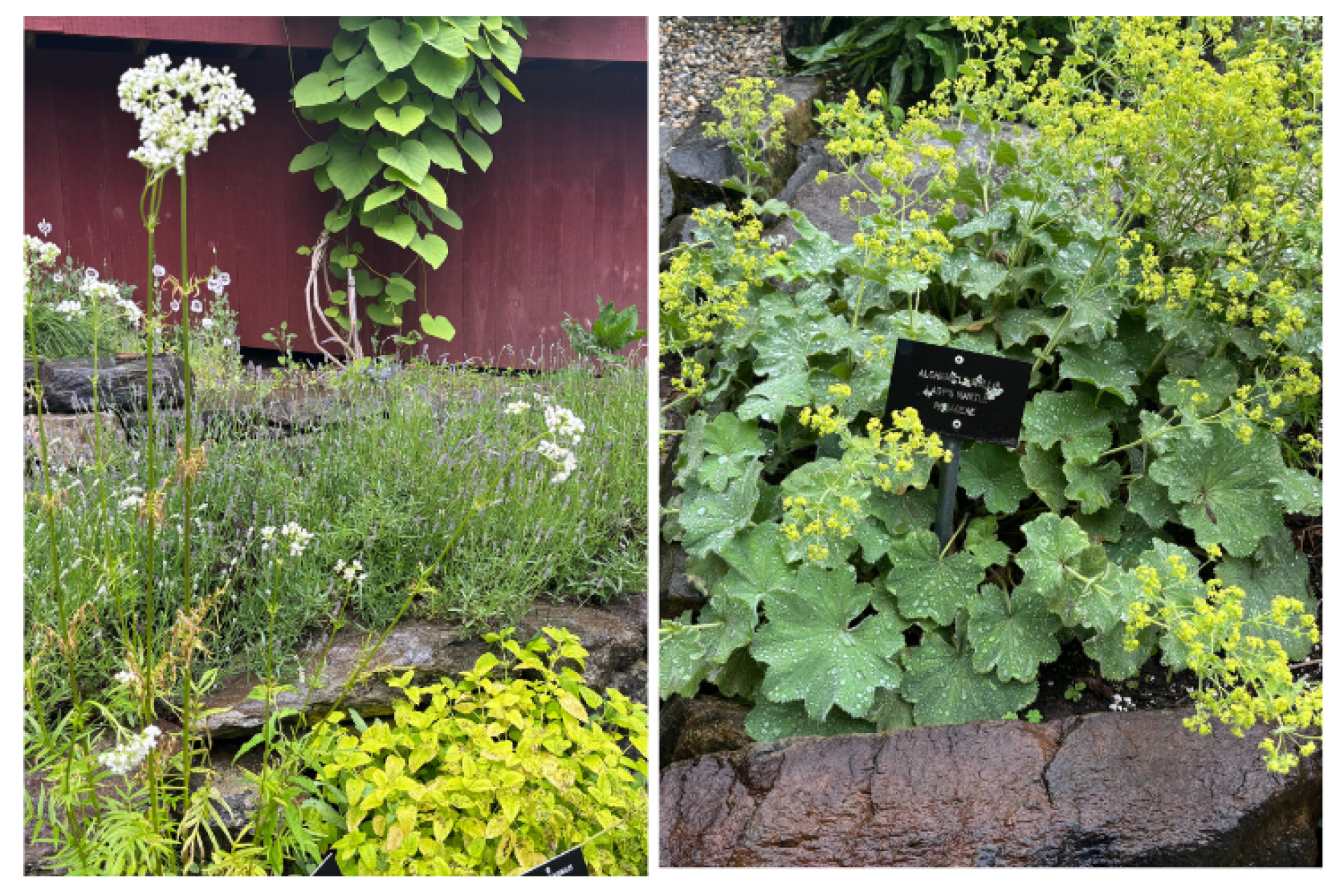You are here
What is Happening in the Herb Garden and Kitchens This Week?
What is Happening in the Herb Garden and Kitchens This Week?
By Barbara F. Smith
This weekly column generally discusses two herbs: one well-known and one unfamiliar to many gardeners. This week’s lesser-known herb is Valeriana officinalis, with the common name Garden Heliotrope, or Valerian. This tall (up to 5 feet) perennial has “made it to the top tier of famously useful plants...” The genus Valeriana may be derived from the Latin “valere” meaning “to be strong,” alluding to its recorded medicinal uses, which date back to ancient Greek and Roman times.
Valerian grows well in full sun, and it prefers damp places like marshes or riverbanks to thrive. It would make a striking addition to ornamental plantings. Its flowers, which may be white, pale pink, or purplish red, bloom from June through September (see photo above).
Valerian’s leaves have a peculiar odor when bruised, which some find attractive and others find repulsive. The odor of the rhizomes and roots has been described as balsamic, warm-woody, and musky. The scent is a “cat magnet” as small amounts of its roots are sold as a luxury toy akin to catnip. Likewise, the scent attracts rats! As the story goes, the success of the Pied Piper of Hamelin in ridding his town of rats may be attributed to the use of Valerian.
The plant’s essential oils have been used in perfumery and as a flavoring in tobacco, beer and other beverages.
Valerian is a reliable sedative, used for centuries to treat mild nervous conditions, panic attacks, and anxiety. In medieval times, it was held “in such esteem as a remedy that it received the name of All Heal.” It was prescribed for eye ailments, to cure worms, or prevent plague. Records indicate Valerian was used to treat mass hysteria at the time of the Black Death. More recently, it was administered as a general sedative during air raids conducted in England during World War II. Valerian is best known today as a natural sedative or tranquilizer. In the United States, it is sold as a dietary supplement (which are regulated as food, not medicine, according to the National Institute of Health).
Today’s well-known herb blooming in the BBG Herb Display Garden is Alchemilla mollis, more commonly known as Lady’s Mantle. It takes its name from the resemblance of its cupped velvety leaves to that of a folded cape (belonging to the Virgin Mary, in some resources). Often, a single drop of “dew” (produced by glands at the tip of the leaves) is found at the center of each leaf. The silvery appearance of this droplet led alchemists to use it in the search for the stone of wisdom.
Growing to a height of eighteen inches, this common perennial plant is a member of the rose family. It is often used as a ground cover. Given the right conditions, it will spread, creating a carpet of light green leaves with airy masses of greenish-yellow, dainty flowers held above (see photo, above). The plants prefer a shaded, somewhat moist and well-drained position. A fairly stable yellowish dye for wool can be prepared from flowering Lady’s Mantle.
Lady’s Mantle has astringent cosmetic properties used as a skin cleanser or to counteract acne or skin irritations. As folklore had it, dew collected from Lady’s Mantle leaves on May Day before sunrise was believed to possess magical properties capable of transforming the plainest women into beautiful ones. Modern medicine recognizes the use of Lady’s Mantle in the treatment of “female complaints” as well as to heal damaged or infected tissues or to purify blood.
The SOLSTICE and Herbs
This past week we greeted the summer solstice, marking the longest day and shortest night of the year in the Northern Hemisphere. Many ancient cultures traditionally harvested herbs on the solstice, believing them to be at their greatest medicinal effectiveness. Classic summer blooming herbs like St. John’s Wort, chamomile, calendula, lavender, and sage are often linked to this solstice time and were included in celebratory bonfires. Herbs like lavender were fashioned into flower crowns and wreaths for the solstice celebrations.
Some of these rituals seem far removed from life in the 21st century. But as the summer unfurls, consider an outing to the Berkshire Botanical Garden and make a point of visiting the Herb Display Garden, which is next to the Center House. If you come on Tuesday mornings, Herb Associates will be available to answer your questions about planting and growing. The beds are organized by the uses of the herbs: for fragrance, medicinal, culinary, or dying purposes, for example. It’s amazing to reflect on centuries of history growing before your eyes! Herbs surely are ornamentally beautiful, but they are so much more. Enjoy!
Help Our Garden Grow!
Your donation helps us to educate and inspire visitors of all ages on the art and science of gardening and the preservation of our environment.
All donations are 100 percent tax deductible.


